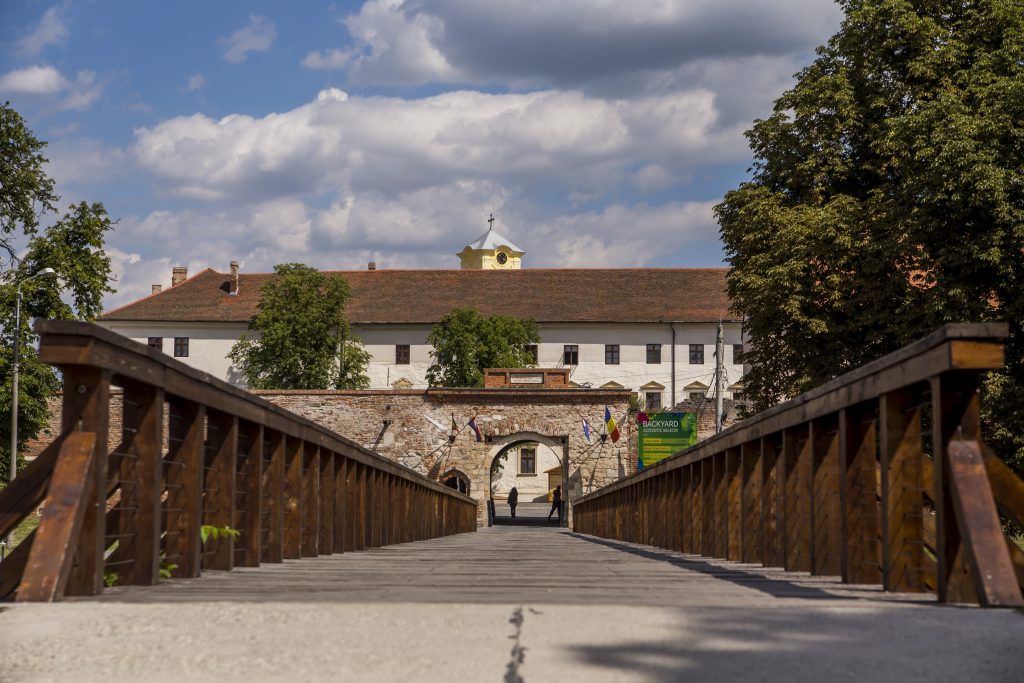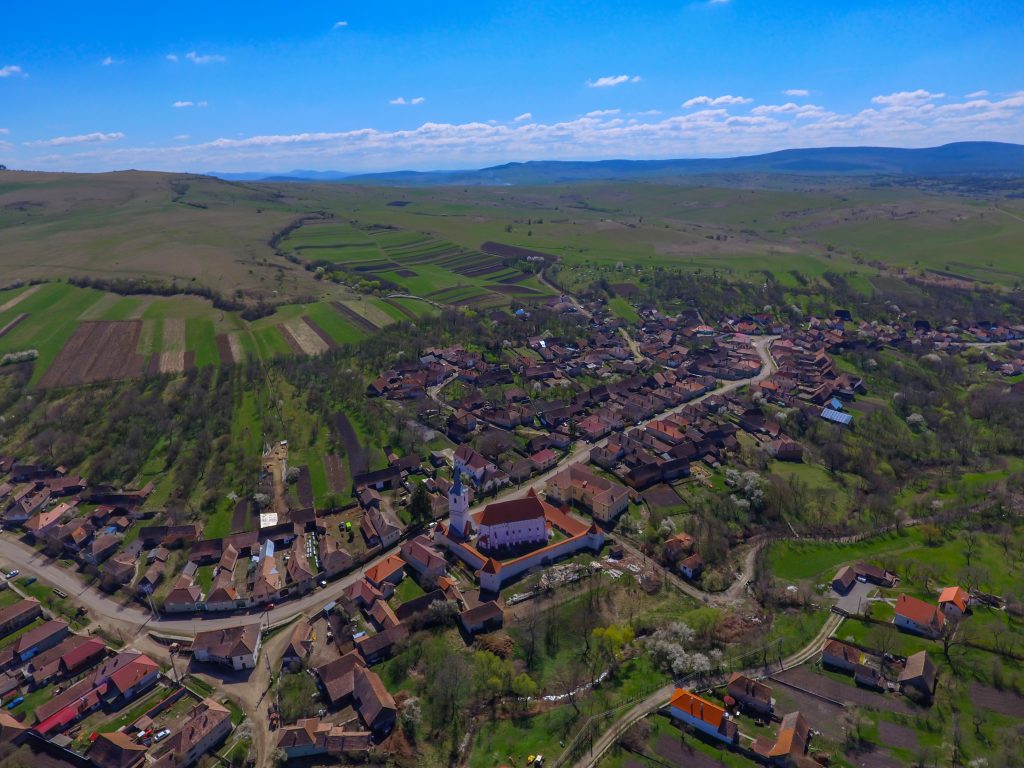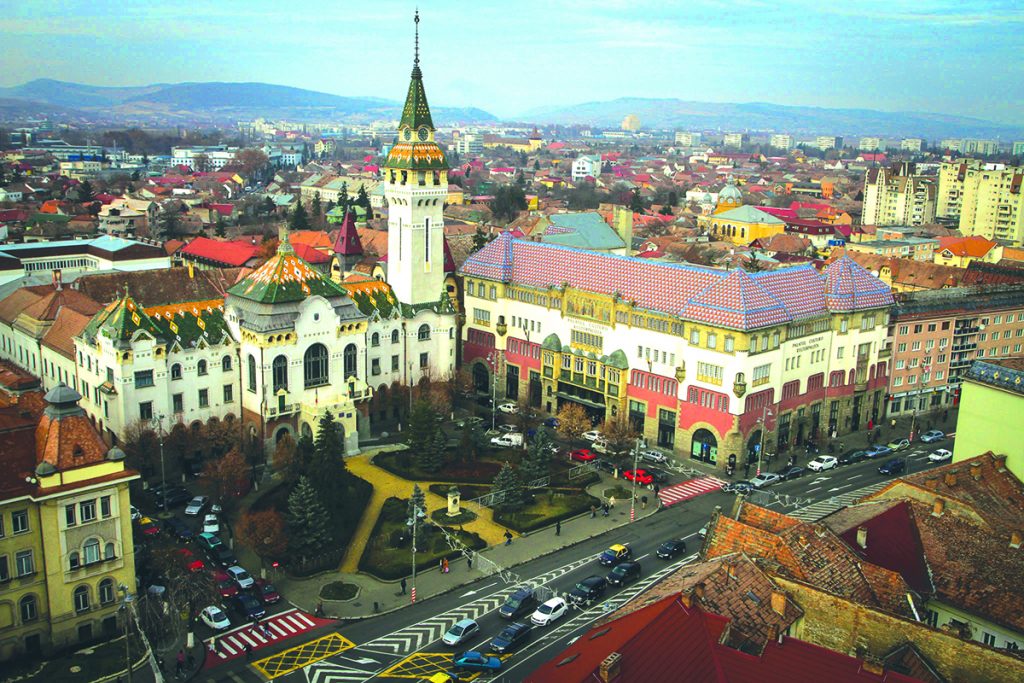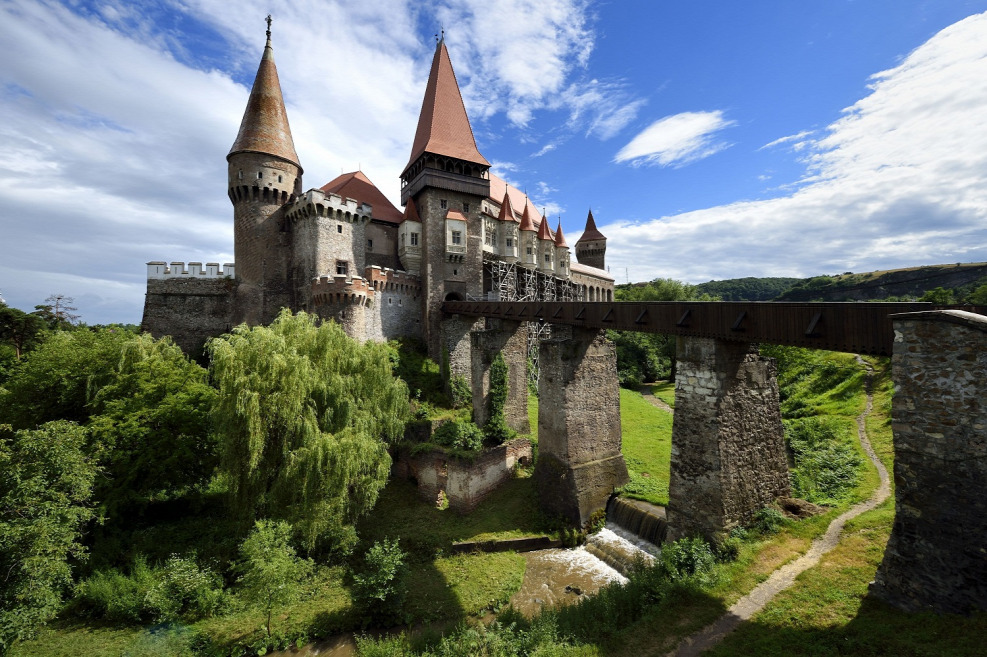Over the course of a thousand years, Hungarians have shaped the character and values of Transylvania. Visiting these must-see destinations, it’s hard not to see how national minorities add value. They enrich with their cultural heritage and pose a threat to no one. We make Europe richer, because we have a lot to offer. Unique regional identity brings character, and strong regions make Europe stronger!
Let me show you 15 destinations for your must-see list on your next visit to Transylvania:
The fortress of Nagyvárad (Oradea) in Bihar (Bihor) county, a place I wandered as a child among the centuries-old walls then covered with grass and debris. It is one of the best-preserved fortresses in southeast Europe. Today, restored with EU funds, it is cherished by locals and loved by tourists. It stands as one of the sights most closely connected to Szent László, the Holy Hungarian King, and its origins date back to the 11th century.
Today you can wander through its 468 rooms, stroll the archaeological discoveries and the well-designed museums, or just enjoy one of the many events organized there.

The Károlyi castle in Nagykároly (Carei), Szatmár (Satu Mare) county is the stuff of fairy tales. You can easily imagine a princess peeking out from one of its tower windows, throwing flowers to her beloved prince. Built as a knights’ castle, today it as an attractive museum and cultural center. Also restored with EU funds, it has an impressive park where you can relax or drink rich coffee nearby on the main square.
The Reformed church of Somlyóújlak (Uileacu Șimleului), Szilágy (Sălaj) county hides an unsolved mystery behind its picturesque simplicity. Built shortly after the great Tartar Invasion of 1241-42, its walls conceal a narrow corridor in their width but its purpose is unknown. On the southern wall of the church’s nave, inner and outer windows are set in such a way that they transfer light to the interior the whole day. All visitors have a chance to access these narrow corridors and, indulging their imagination, solve the nine hundred year-old mystery.

The 2 gothic churches of Kolozsvár (Cluj)
The 700 year-old Saint Michael’s Catholic Church (see cover photo above) dominates the main square of the town. It’s the most stunning Gothic building in Transylvania and is currently under restoration with EU funds. The Holy Mass is still celebrated there everyday and it remains open to visitors. It harbors some well-hidden murals ready to be discovered and is guarded by the statue of Mátyás király (King Matthias), who was born in the city.
The Reformed Church in Farkas (Kogalniceanu) street and the statue of Szent György (Saint George) offer a taste of simplicity. The church houses a unique collection of coats of arms and charters dating back to the 17th to 19th centuries. It has been carefully restored with EU funds, and during the summer season, plays host to the best organ concerts in the city.
Bánffy castle, Bonchida (Bontida), Kolozs (Cluj) county is one of the most spectacular Transylvanian aristocratic residences, which functions at present as an educational and cultural center, attracting fifty thousand visitors annually. It is near and dear to my heart, as I have been working with my team on its restoration over the last 20 years. Its once beautiful buildings are currently under restoration, but you can enjoy a relaxing walk, see the treasures of the castle, or just have a cup of coffee in the courtyard. In the summer, it hosts one of the biggest electronic music festivals, Electric Castle, and houses many other cultural and community events. More details here.
While in Marosvásárhely (Târgu Mureș) you cannot miss the Kultúrpalota (Palace of Culture) built at the beginning of the 20th century, especially if you are a fan of the Art Nouveau style. It contains some of the most extravagant wall paintings and stained glass windows, which depict Hungarian personalities. Even the toilets are pieces of art. Comprehensive renovation works are expected to be launched in early 2019 financed by the EU, but parts of the building can be visited during that time, too.
If you are into rare books, Teleki Téka is your place! The L-shaped city palace of Marosvásárhely (Târgu Mureș) was built in the mid-1770s by Kata Wesselényi. With the expansion of this house, Sámuel Teleki established an impressive hall, which houses the first public library of the Transylvanian Grand Duchy, opened in 1799. The building includes all the facilities of the contemporary aristocratic city palace, and almost half of the building’s floor still functions as a lively library.

Mikó Castle is the oldest building in Csíkszereda (Miercurea Ciuc), home of the Székely Museum of Csík. Its construction began in 1623; Giacomo Resti from Italy, who worked in Transylvania between 1615 and 1634, contributed. The 75 by 70 square meter rectangular castle building was completed in the third decade of the 17th century. Today it houses extremely interesting temporary exhibitions.
But if you are in Csíkszereda, you absolutely must visit the Franciscan Church of Csíksomlyó, destination of a pilgrimage that takes place every year for the feast of Pentecost, the largest pilgrimage in the Carpathian Basin. The Church houses a statue, over 500 years old, of Our Lady with the infant Jesus. The wooden statue is said to be the source of several miracles over the course of the centuries. More about the church here.
The Lázár Castle in Gyergyószárhegy (Lăzarea), Hargita county, is one of the most beautiful works of Transylvanian architecture of the 17th century. Not many of its kind have survived. It was built as a home for a noble family, and the predecessor of today’s building complex was the 15th century András courtyard. A major part of the construction was carried out in the first half of the 17th century. The builder was István Lázár, chief judge of Csík, Gyergyó and Kászonszék, who renovated his castle in the Renaissance style. The castle was built on a slope of the mountain, in a rectangular shape with rectangular bastions at its corners, and houses many woks of art. If you are lucky you can admire its interiors, too.
The Unitarian Fortified Church of Székelyderzs (Dârjiu), Hargita county. You can find in this Szekler village the most incredible UNESCO World Heritage Site, which has unique 15th-century wall paintings, including the legend of Szent László. The shrine was built in the 13th century, the nave in the 1400s, and the monumental church stands in the middle of a five-bastion fortification. It is yet another hidden treasure of Transylvania, that enriches the cultural heritage of Europe and of the whole world.
The Székely National Museum of Sepsiszentgyörgy (Sfântu Gheorghe) is another place where I used to play as a child. It was designed by the renowned architect Károly Kós, in 1911–1913. If you visit on a sunny day, the roof tiles will smile at you with their colorful glazing. It has a stunning collection, including a canon cast by Áron Gábor, Szekler hero of the 1848-49 Hungarian revolution. Its main window has been designed by Miklós Bánffy, Count of Bonchida. The whole building will be restored from EU funds, but some parts will remain open to the visitors during the renovation.
The monumental Roman Catholic Church of Saint Imre (yet another Hungarian saint) was built in the middle of the 13th century, in Gelence, Kovaszna (Covasna) county. In the 15th century, a protective wall and a bell tower were added. The small church is one of the most beautiful, early Gothic monuments in Szeklerland, reminiscent of a beautiful jewelry box full of treasures. The frescoes, dating from the 14th century, depicting several scenes of Saint László’s legend in Gelence are among the oldest and most valuable Transylvanian wall paintings.
The Mikes Castle in Zabola dates back to the 15th century. It is built on the remains of an early fortified building, which is said to have burned down in the liberation war of Transylvania. On the first floor, all the ceilings were covered with frescoes from 1867 (currently painted over) when the building was extended and redecorated. Under communism, the Castle and the estate were used as a school and a sanatorium. A 50 meter-long tunnel connects the Castle to a large villa, built around 1900 for hosting the offices of the Estate and rooms for guests of the family as well as a large kitchen. Today, the family has moved back to the castle and is restoring it. Lavish events and weddings are held here. More here.
Torockó (Rimetea) in Fehér (Alba) County is a former mining town under the Székelykő mountain. It is the only place in Transylvania where the sun rises twice every morning (see for yourself! we won’t spoil the surprise). The town’s jewels are the typical residential houses that preserve the 19th century designs on the facade, the 18th century fortified Unitarian church, the traditional costumes, the sewn fabrics, and the painted furniture. In 1999, Torockó received the Europa Nostra Award for the preservation of cultural heritage. More here.
Corvin Castle, also known as Hunyadi Castle, was built in Gothic-Renaissance style in Vajdahunyad (Hunedoara), over the site of an older fortification. It is one of the largest castles in Europe, an imposing structure with tall towers, bastions, and beautiful stone carvings. The exhibitions are quite interesting, too. Legend has it that the 30 meter-deep well in the courtyard was dug by three Turkish prisoners, promised liberty if they reached water. They completed the well after 15 years but were never set free. It is said that they wrote on the wall of the well, “You have water, but no soul.” Specialists disagree, but let’s see how you translate the inscription.

Without these treasures, not only Romania but the whole Europe would be poorer. Is it worth restoring and maintaining them? Is it worth appreciating the community that has built them and looks after them even today? I am sure you will agree, after visiting them: Europe needs these regions, because they offer the best of Europe: beautiful landscapes, friendly people, great food, clean air, and, without doubt, the best pálinka (plum brandy) you will ever taste. So, let’s enjoy them and grant them the respect they deserve!
Title image: Szent Mihály church, Kolozsvár (photo: Péter Lepedus-Sisko)